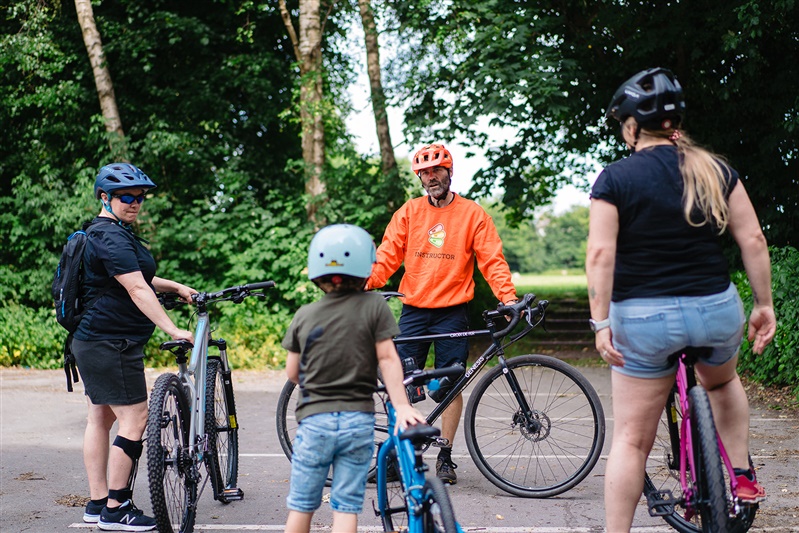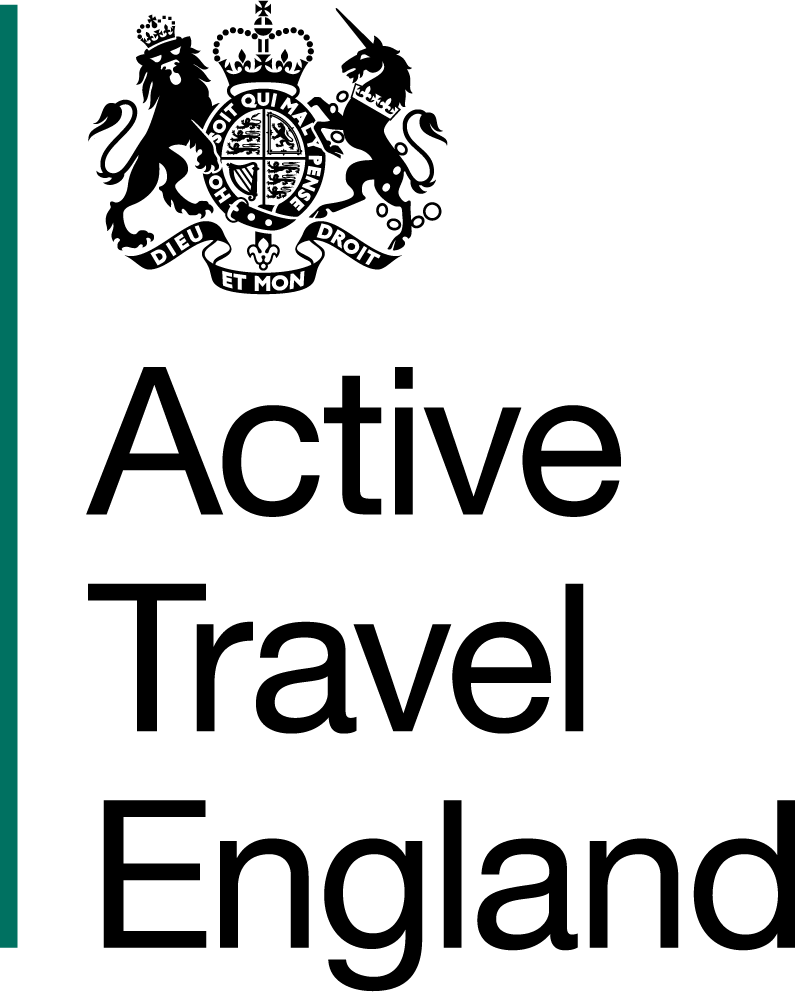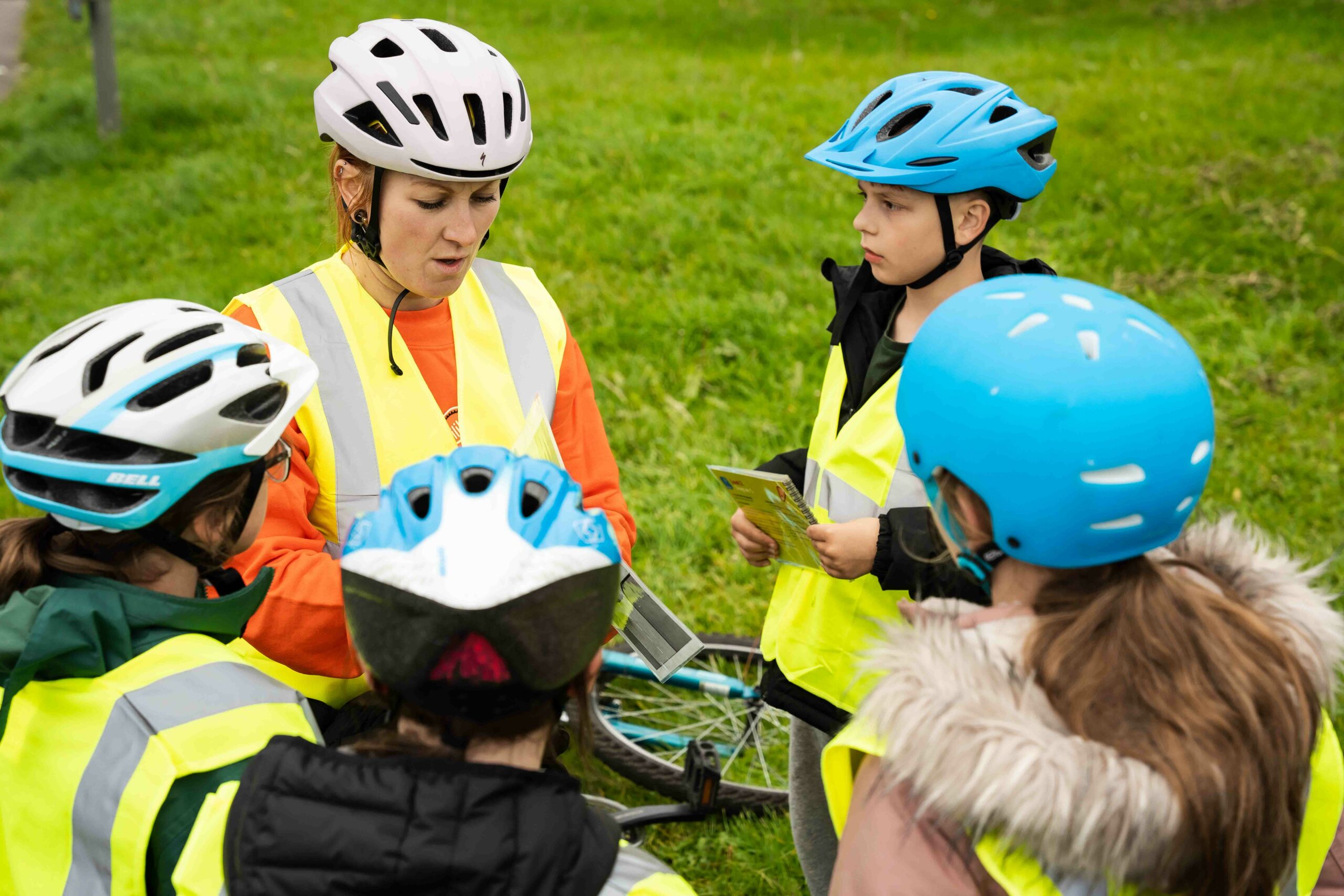Activity trackers
Track rider activity as they progress through the levels.
Active learning
This guide explains how to maximise active learning time during cycle training.
The Highway Code Addendum
This guide outlines the changes in the revised Highway Code and how they impact on Bikeability cycle training delivery.
Assessing riders during Bikeability training
Criteria for assessing rides during their Bikeability training.
Printable versions of the delivery guide
Versions of the delivery guide that are suitable for printing. Updated June 2024.
Changes to the delivery guides
Following your feedback, we have made some changes to the delivery guide and other documents.
Find out what has changed here.
What was the aim of the Bikeability delivery guide review?
To incorporate consistent themes in instructor feedback and to improve training resources. An instructor survey was conducted in 2022 to fully capture all issues.
Themes for improvement were:
- To meet accessibility guidelines
- To provide more visual representation of different training activities, through pictures, photos, and video
- To improve diversity and representation.
- To ensure all content was clear and consistent.
- To provide addition resources such as activity templates
- To ensure that language is understandable and uses consistent terminology.
Bikeability must be delivered according to the guidance, which emphasizes a flexible and rider led approach. Where Bikeability instructors wish to clarify any aspect of training delivery, this should be done with their training provider or the Bikeability Trust.
For all questions relating to the digitisation project please see the information here.


Language
We apologise, this is an oversight on our part. Instructors should where possible, avoid or minimise use of ‘dangerising’ language. This will be changed to ‘if there is not time and space’ (to overtake).
Visual resources
The Trust will not be printing the resources. The PDF documents are suitable for home printing. Recognised Delivery Centres and Training Providers may want to print off multiple copies for instructors. The Trust encourages the use of electronic documents where possible to minimise environmental impact.
Additional resources – Consistent and high quality cycle training | Bikeability
Yes, the links do not contain anything that is not already in the written guidance.
It is not a legal requirement to wear either. We wanted to present this as an independent decision for the rider, not a barrier to those who do not own them or are unable wear a helmet.
Training Providers can share the videos before a course, instructors can also show videos to riders in a classroom setting or as a contingency in poor weather. The videos are not intended to replace a demonstration during a course. The videos will be made available to every rider after their course through the Bikeability Club.
Instructors do not have to show the videos to learners on their phone, this is not the primary aim of the videos. Instructors should use demonstrations and Q&A on the course.
Yes – this would be a great way to share the videos with schools before Bikeability sessions to give riders some understanding of what they will do during their training. It means that the materials should also be available for use as part of a poor weather session.
The videos can be used in whatever context you find helpful. However, they are designed to show good practice road use/cycle skills, rather than directly helping instructors with their teaching and coaching strategies.
The guidance documents have been designed to be fully compliant with accessibility guidance.
When viewing it as a PDF, (depending on how you are viewing the documents) it is possible to change the font colour and zoom level. How you do this will depend on the PDF reader you are using.
Instructor delivery
Cycling is a continuous string of decisions, with riders thinking about when to apply each of the four key skills.
A ‘routine’ is a helpful way to remember the relevant key skills in each moment. How and when you do each of them will change and is unpacked more thoroughly in the “instructing points” in each activity template. For example, when you approach junctions, a rider will potentially need to consider two signals, once to change position and once to communicate their intended direction of travel. A rider will also need to carry out more than one observation.
Signaling direction of intended travel should typically happen when in primary position.
Primary position should be used to encourage drivers to follow the rider rather than overtaking and increase the rider’s visibility and ability to see. If visibility is excellent, and there are no other road users present, a rider could choose to remain in a secondary position when passing a side road or turning left. This must be an independent decision made by the rider, and instructors should check their understanding and decision-making process with questioning. This is an advanced skill and should be typically unpacked with more experienced riders.
If necessary. The routine for changing road position is to, look, communicate, if necessary, then change. Typically signaling to change road position will only happen in higher traffic volumes. Riders should also prioritise cycle control, use their speed to manage the situation and observations to understand the intentions of other road users.
Please refer to page 42 of the Cycle Training Delivery Guide. No site is the same and instructors should ‘do what they can with what they have’. Remember that typically instructors are training in the riders’ local area – be positive and adapt your training to the site.
The following strategies could be used:
- Plan a journey that includes any local infrastructure and work with what is available. Do not worry if this does not fit a traditional progression of activities.
- Focus on helping riders apply the four key skills in whatever scenario they find themselves, including situations they are likely to encounter locally (for example, riding with agricultural machinery on the roads).
- When moving groups, ask questions and encourage independent decision making.
- In areas where there is no traffic, use riders in the group to create some. Encourage independent decision making in the area that you have defined and allow more riders on the road at one time.
- Consider inviting the riders to a holiday course in a nearby town.
Level 2 may be delivered on roads with a speed limit over 30 mph. While this should be an exception, sometimes it is necessary where 30mph roads are not available, for example in more rural settings. All sites should be risk assessed and used if appropriate. Your risk benefit assessment should include assessing sightlines, instructor positioning and rider start and end point.
As far as we are able without being prohibitively prescriptive, this is defined on page 65 of the Cycle Training Delivery Guide. The most important thing for instructors to bear in mind is the principle of ‘Progression’. Asking the question, ‘is this training environment suitable for this group?’.
Signaling to stop is included in the ‘Instructor Points of the Activity Templates. Riders should signal if necessary.
It is useful for others to know that a rider is stopping. This could be pedestrians, other riders, any other road user in close proximity.
The priority should be to teach control over communication in this, and other situations. If it feels like a rider may lose control of their cycle, then communicating drops down the order of importance.
Bear in mind though that adding complexity for riders at the beginning of their Level 2 journey should be minimised. When teaching early activities, riders may find this challenging, and priority should be given to managing speed and observation. A greater distance between the starting and stopping positions adds realism and helps to give riders time to think and prepare.
Where riders are not yet confident to signal, they should prioritise control, and use it as an opportunity to practice.
No. As riders approach a parked vehicle they should negotiate their way into primary position, if not already in this position. This change in road position may require a signal.
Riders should manage the relationship with any road user following them by using their road position and observations.
A signal is not needed to tell oncoming traffic that you hope to overtake, as you give them priority. Your road position communicates your intention to the road users behind, and staying in control of the cycle should be prioritised.
Signaling too often could lead to confusion, leading other road users to think you are turning right.
We have given both options on page 56 of the delivery guide. If being moved ‘passively’, a helpful rule can be for riders not to signal and to prioritise control (see section 7, subheading 2, point 3 in the guide)
However, if using snaking as a learning opportunity, (see section 7, subheading 2, point 4 in the guide) ‘You can also ask riders to practice what they have learned in training as if they were riding on their own,’.
Rule 223 of the Highway Code says: ‘Buses, coaches and trams. Give priority to these vehicles when you can do so safely, especially when they signal to pull away from stops. Look out for people getting off a bus or tram and crossing the road.’
This is reflected in guidance on page 55 of the Ride Guide and page 74 of the Activity Templates
Shepherding should be carried out as described in the guidance.
Leading from the front is discouraged because an instructor cannot see behind them frequently enough to manage the risk, or observe the riders cycling practice, and should not leave riders behind.
If the instructor has concerns about the group’s ability, they can choose a more appropriate route or training site or ask the riders to ride side by side ensure greater control.
- Road position is dynamic, and when turning right from a major to a minor road, riders should always be in primary position, in the middle of the traffic flow, to increase rider visibility and discourage overtaking (on either side)
- Where the lane is wide, riders should decide for themselves where the middle of the traffic flow is, and understand that this may not be directly in the middle of the physical lane, but maybe closer to the centre line, in line with traffic flow. Direction of travel should be communicated clearly to other road users where present.
- When thinking about road position in this instance, riders should not encourage overtaking on their left, and be aware of proximity to oncoming vehicles.
- Road users following riders should not overtake at junctions.
Risk Management
Yes, if your riders have achieved everything they need to, well within the allotted time, instructors may choose to use other local infrastructure to deliver more complex activities, in more challenging environments, providing that the level of progression is appropriate.
Risk benefit assessment moves away from grading sites as ‘low’, ‘medium’ or ‘high’. Training Providers should use their own (or the Trusts) risk assessment template, and apply the principles of Progression to each site, i.e., asking whether it provides just the right amount of challenge to the rider, and are the risks presented manageable by the rider(s) and the instructor?
Risk assessment should cover an area with a number of sites, rather than just a handful of preselected sites, when deciding on a ‘journey’, this needs to be a joint exercise, which you and the riders input to, you don’t have to do exactly what the riders want, but should steer them towards a route which covers helpful infrastructure to help them achieve competence in the level you are teaching.
Timings and ratios
Yes, instructors should carry out a short check of ability prior to beginning the intended module. You don’t want to find out that a rider can’t cycle yet when on the road. This should be incorporated within the minimum training times.
Training providers should set their own course schedules, complying with ratios and times on page 61 on the Cycle Training Delivery Guide.
No! Please deliver how is best for the riders. We have presented the ratios in the CTDG by referring to 1 instructor for ease of presentation, if working with more, simply double the ratios.
Training ratios have been signed off by DfT having been agreed multiple times over the past 15 years by Cycle Training Standards Board. Guidance has also received input from solicitors and risk management academics.
No serious incidents have been reported to the Trust or DfT over recent years caused by the number of riders on the road. There are strategies included in the guidance to support instructors manage risk and length of the group, which includes doubling riders up.
Recognised prior learning
Instructors who are going through Recognised Prior Learning (RPL) should try to deliver to the latest guidance, but should also not worry that training has changed radically, because the focus of the update was on creating accessible and additional resources. New guidance also does not change the assessment criteria for the RPL. Assessment is focused on the delivery of National Standard for Cycle Training, and the National Standard has not changed.
Highway code
Pedestrians should be given priority at designated pedestrian crossings, such as zebra crossings, and at junctions. This should be taught by Bikeability instructors. Riders should be taught Rule H2 from the Highway Code: ‘At a junction you should give way to pedestrians crossing or waiting to cross a road into which or from which you are turning.’ Riders should be taught that this is an updated rule, and that they should be mindful to manage the relationship with road users following them as well. This should involve:
- approaching junctions with caution,
- scanning ahead and behind well in advance of the junction
- be aware of drivers or riders travelling in close proximity behind them at junctions
- make eye contact where possible, slow gradually and communicate intentions in advance
Good practice FAQs
The national standard for cycle training contains a routine for changing road position, which you are doing when you pull in to stop:
how to change position using a systematic routine:
- look behind for following vehicles
- communicate intentions to other road users ahead or behind if necessary
- change position when there is time and space to do so
Guidance in our latest cycle delivery training guide is:
If appropriate, signal left to communicate your intention to pull in to the left.
The appropriate-ness of a signal, as always depends on the question ‘is there anyone else around who needs to know what I am doing, and am I in control of my cycle?’
No, that is part of the Level 3 training which is aimed at KS3.
This is a localised decision and not something that can be directed nationally, as those responsible for delivering the training have responsibility for the decisions that are specific to their conditions. Even a localised weather forecast for an area may not reflect specific local conditions in a park or at a school, which could be better or worse than the forecast.
It is the responsibility of training providers and instructors to observe and assess their local conditions.
For further guidance, please see the Trust’s generic risk benefit assessment which deals with exposure to adverse weather conditions and can be found at the bottom of this page.
We have no specific guidance or hot weather policy. There should be a conversation with the school about the systems they have in place during hot weather. There is some useful guidance from gov.uk here:
Part of a training providers IQA responsibilities is instructor observation. Training providers may accept observation forms from other training providers, however you will need to arrange the sharing of observation forms, and all parties need to be happy for this to take place. The training provider will need to accept that the observation is an accurate reflection of the instructor in question, and accept any potential professional liability that comes with not observing the instructor themselves.
There is no specific guidance on this, but it is fine to complete training on astro turf if no other surface is available. The instructor should take into account that there will be subtle differences in braking and steering especially. Other considerations should include whether it is likely to be damaged, for example pedals tearing the surface or wheels marking it.
When delivering a combined Level 1 and 2 course, and the whole group of riders at Level 1 display full competence* before the end of the minimum time allocation, instructors may choose to move onto Level 2 training ‘early’. Overall course length must remain the same for every rider. If delivering 1:6 – this will be a total of 8 hours.
*where riders are unable to ride one-handed, instructors should use more of the allotted Level 1 time to improve and refine this skill before moving on to Level 2

